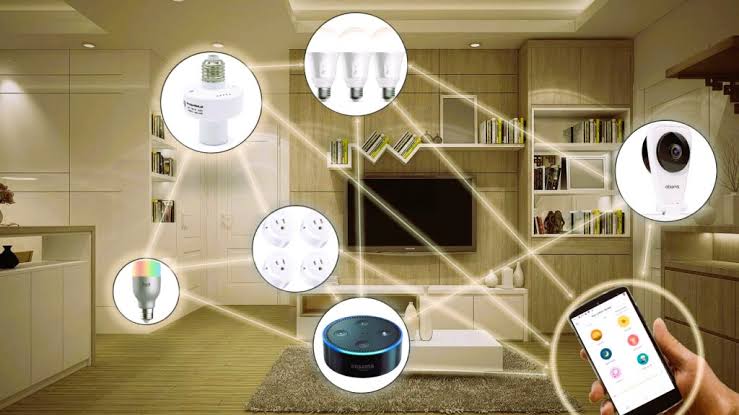Smart home devices have evolved from basic automation to smart systems that learn your habits and preferences. As of July 2025, customization is key to making your smart home feel personal. Whether it’s smart lights, thermostats, voice assistants, or security systems, adjusting these devices to fit your lifestyle improves comfort, saves energy, and gives you more control.
From creating mood-based lighting scenes to setting voice commands that trigger multiple actions at once, today’s devices are designed to respond to your individual needs. But to truly unlock their potential, you need to know how to personalize them effectively.
Setting Up User Profiles and Preferences
The first step toward a personalized smart home is creating distinct user profiles for everyone in the household. Most major ecosystems—like Google Home, Amazon Alexa, and Apple HomeKit—allow for multiple user logins.
- Voice recognition can help smart assistants distinguish between users, so one person’s music, reminders, or commute updates don’t interfere with another’s.
- Customized schedules let you assign routines and automation based on who’s home, the time of day, or even the day of the week.
- Individual preferences for lighting, temperature, and entertainment can be saved and recalled with simple voice commands like “Good morning” or “Movie night.”
This approach ensures that your smart home reacts differently for each person, offering a truly tailored experience.
Automating Daily Routines
One of the most powerful features of smart home systems is routine automation. These are programmed sequences of actions that run automatically or at your command.
Examples of customizable routines include:
- Morning Routine: At 7 AM, the blinds open, the thermostat adjusts to 22°C, your favorite news podcast plays, and the coffee machine starts brewing.
- Leaving Home Routine: When your phone disconnects from the home Wi-Fi, all lights turn off, the doors lock, and the security cameras activate.
- Evening Wind-down: At 10 PM, lights dim to warm tones, background music plays, and the thermostat lowers for sleeping comfort.
Most apps let you set triggers such as voice commands, location-based detection, or specific times of day to initiate these routines. The more you automate, the more your smart home feels intuitive and responsive.
Personalizing Lighting and Ambiance
Lighting is one of the easiest and most impactful elements to personalize. With smart bulbs and light strips, you can control brightness, color temperature, and hue.
Here’s how to make your lighting more personal:
- Scene creation: Use your smart home app to create lighting scenes like “Relax,” “Focus,” or “Party.” These can include specific brightness levels and color schemes for each room.
- Voice and gesture controls: Link your lighting scenes to simple commands or motion sensors. For instance, saying “I’m home” could turn on soft hallway lights and a warm lamp in the living room.
- Circadian lighting: Program lights to mimic natural sunlight throughout the day—cool and bright in the morning, warmer and dimmer in the evening—to support your sleep cycle and productivity.
By customizing your lighting, you set the tone for your space in a way that matches your mood and activity.
Smart Climate Control
Smart thermostats and air conditioning systems can learn your temperature preferences and adjust settings automatically. With geofencing, your home can begin cooling or heating before you even walk in the door.
To personalize your climate system:
- Set zones for individual rooms if your HVAC supports it. Bedrooms can be cooler at night, while the living room stays warm during the day.
- Create seasonal profiles so your settings shift with the weather, including humidity control and air purification.
- Link sensors to trigger actions—like turning on a fan if a room becomes too warm, or adjusting the heat based on external temperature data.
Smart climate control systems not only provide comfort but also help reduce energy costs by adapting to your lifestyle.
Security and Access Customization
Modern smart security systems allow for much more than just turning alarms on or off. You can personalize how and when you’re notified of activity, and control who enters your home.
Key options include:
- Custom alerts: Get notified only when certain doors open at unusual times, or if motion is detected in specific areas.
- Facial recognition (in some cameras): Set familiar face detection so that you only get alerts for unknown visitors.
- Smart locks: Assign different codes or virtual keys to family members, friends, or service providers. You can set time limits or track who entered and when.
- Vacation modes: Simulate activity by randomly turning lights and media devices on and off while you’re away.
With the right setup, your home can be more secure without making you feel like you live in a fortress.
Entertainment Personalization
Smart speakers, TVs, and streaming systems can all be configured to reflect your tastes and preferences.
- Customized playlists and media profiles: Your voice assistant can be linked to personal music accounts and video platforms so you always hear your favorites.
- Multi-room audio: Assign audio zones so that different family members can enjoy music or podcasts in separate rooms simultaneously.
- Media scenes: Pair dimmed lighting, lowered blinds, and auto TV start for an immersive movie night experience triggered by a single command.
These personalization options make your entertainment system feel like a concierge for your leisure time.
Integrating Third-Party Devices and Services
Expanding your smart home with compatible third-party devices can unlock even more personalization. Platforms like IFTTT (If This Then That) and SmartThings allow you to create advanced automation across brands.
For example:
- If your Fitbit detects that you’re awake, your lights can gradually brighten and your coffee maker can begin brewing.
- If the air quality sensor detects pollution, the smart air purifier automatically powers on.
- If your calendar shows an upcoming meeting, your office lights and Do Not Disturb mode are triggered automatically.
With endless combinations, third-party integrations help fine-tune your smart home to your lifestyle.
Tips for Better Personalization
To get the most from your customization efforts, keep these tips in mind:
- Start small: Focus on one room or one category at a time—such as lighting or security—before expanding.
- Learn your system’s full capabilities: Dive into the settings and explore advanced options that might not be obvious at first.
- Involve the whole family: Encourage everyone to create their own routines and profiles for a truly inclusive smart home.
- Regularly update and review: As your habits change, update your settings to stay aligned with your lifestyle.
The more you engage with your system, the smarter it becomes.
Conclusion
Personalizing your smart home devices isn’t just about convenience—it’s about transforming your home into a dynamic environment that works for you. Whether you’re optimizing your morning routine, customizing your climate, or fine-tuning your lighting, these changes enhance comfort, energy efficiency, and security.
By taking full advantage of your devices’ personalization features, your smart home becomes not just intelligent, but truly responsive to the way you live. As technology continues to evolve, your ability to tailor your home experience will only become more intuitive, immersive, and seamless.



